| |
|
|
|
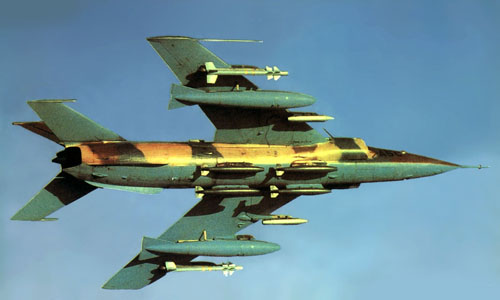 |
 |
The A-5C export version in flight.
  |
|
| |
back to Q/A-5 main |
 |
Nanchang Q/A-5
|
Even though it is often mislabeled as “a chinese copy of the MiG-19”, the Nanchang Q-5 should instead be credited as the first indigenous chinese jet aircraft to reach production.
The chinese license version of the MiG-19, the Shenyang J-6 (Jian-6 also known as F-6),was extremely popular with the People’s Liberation Army Air Force, so when Air Force leaders called for a new ground attack aircraft for close air support, it was a logical choice for the young chinese aircraft industry to base the design on the proven J-6.
Even though the Q-5 still bears a strong resemblance to the J-6, except for its nose and intake sections, most of the plane is redesigned, except for the rear section of the fuselage with the same engines and horizontal stabilizers. The rest of the fuselage had been redesigned to allow better control at transonic speeds, and the wings and tail were completely redesigned, with reduced sweep angle on the wings. The Q-5 design also included a internal weapons bay and the installation of a radar in the Nose. The weapons bay was only used as such in the early operational versions, and is now used to store additional fuel, raising the fuel capacity by 70%. The nose was not actually fitted with a radar except for the navy versions.

|
 |
 |
The Q-5's prototype, note the gun is still build in the nose.
  |
|
 |
Even though the Q-5’s first prototype had been finished by 1960, the project was officially cancelled in 1961, but the project was secretly kept alive, and was revived in 1963, leading to the successful maiden flight on June 4th 1965. Production began four years later in Nanchang City, with the production place doubling as name of the production company. The first Q-5’s were delivered to operational squadrons in 1970.
 |
|
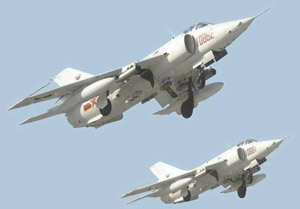 |
 |
The Aircraft received a number of upgrades over the years. In the 1980’s, the export versions, called A-5 - The chinese Q for Qiang (attack) had been replaced by an international A for Attack - came out and were sold to the Air Forces of Pakistan, Bangladesh, North Korea and Myanmar. Both Q-5’s and A-5’s are also known under the NATO reporting name “Fantan”, inspired by a chinese game similar to Roulette.

|
|
|
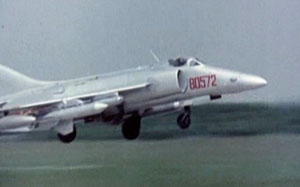 |
 |
The navy version with modified nose, carrying two torpedoes
  |
|
Even though the Q-5’s main mission in chinese operation is close air support, it has been modified to fill a number of roles. A small number of Q-5’s were modified to carry a single nuclear bomb under their belly. All of them have been retired and one is on display in the Chinese Aviation Museum in Beijing. Another version was the torpedo bomber version. It featured a modified nose for improved downward vision, similar to that of the MiG-27, which housed a fire control radar and could carry two torpedoes under the main wing pylons. Even though this version proved highly satisfying during its evaluation, it entered service in only small numbers and was retired early, since the use of torpedoes in modern naval warfare was considered to be pointless. It was replaced by a navy version, which retained a radar in the nose and had the capability to carry air-to-ship missiles. This navy version shared its predecessors fate.
 |
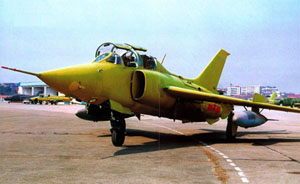 |
 |
The latest version of the Q-5 is this double-seater
  |
 |
|
To upgrade the Q-5’s abilities, the remaining aircraft were retrofitted with GPS systems and a laser guidance system, allowing the usage of Laser Guided bombs. Since the Laser guided bombs had to be carried under the main wing pylons, a conformal fuel tank was fitted on the belly to compensate the unavailability of wing pylons to carry drop tanks. The latest version of the Q-5 is the two-seater, which can be used as a Trainer with double control or as a forward air controller with a observer/ weapon controller in the backseat.

|
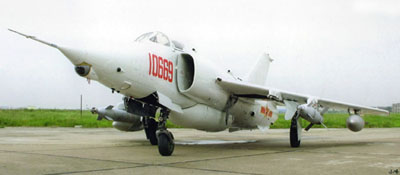 |
 |
Q-5 modified to carry laser-guided bombs
|
| |
|
wingspan: 9.68m
length: 15.65m
height: 4.33m
empty weight: 6375kg
max loaded weight: 9486kg
maximum speed: Mach 1.12
range: 2000km |
| |
| return to top |
|
|
|






